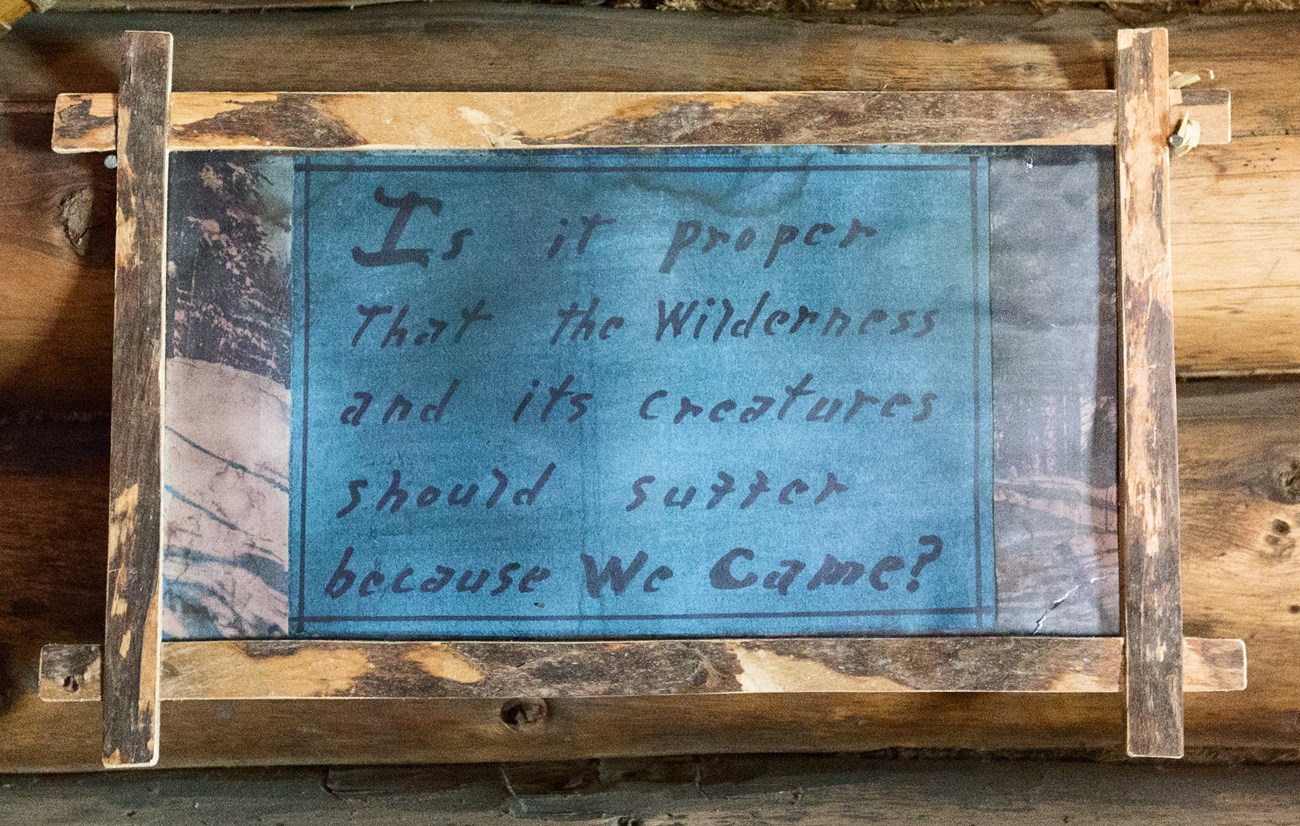Last updated: October 26, 2021
Article
Handmade Wilderness Sign

Evolution of an Ethic
This sign was made by Richard Proenneke. It was hung in his cabin at Upper Twin Lake and provides us insight to the evolution of one man's wilderness ethic. Handy and creative as ever, Proenneke crafted this sign from a commercially printed photo, construction paper, masking tape, and some scraps of wood. Its message is simple yet poignant; "Is it proper that the wilderness and its creatures should suffer because we came?" He kept it in his cabin the entire time he lived at Upper Twin.The wilderness in the Twin Lakes area both resonated with and shaped Proenneke's behavior and beliefs. From the very beginning he spoke of an appreciation for the place.
"May 21, 1968.
It was good to be back in the wilderness which always seems to be at peace with the world"
However, as time went by, Proenneke gained sense of stewardship for the wildlife which he had not necessarily possessed when he first visited the area. Over time, Proenneke became very critical of sport hunters and, as his journals so clearly demonstrate. The killing of Twin Lakes' wildlife became anathema to him.
"May 16, 1974
I came up along the edge and found a place to get off of the ice near Jerrie's cabin. Snow hides the sins of winter. Now with it gone cans and trash lay every where. Nine carcasses of foxes lay in a heap. Fur buyers are not particular these days. These skeletons still had the feet attached. Nine foxes and one small wolf. I should waste some film on that display and then a shot of my little decoration (in the cabin) which reads 'Is it proper that the Wilderness and its creatures should suffer because we came?'"

NPS Photo/T. Vaughn
Today, a replica of this sign still hangs in Proenneke's cabin, a perfect testament to his feelings about wilderness and stewardship. Park staff removed the original from the cabin and added it to the museum collection. It has since become one of the most viewed objects in the collection. Does the belief he expresses in this sign resonate with you, too?
